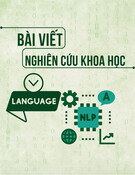
TNU Journal of Science and Technology
230(03): 95 - 100
http://jst.tnu.edu.vn 95 Email: jst@tnu.edu.vn
EFFECTIVE FEEDBACK IN WRITING INSTRUCTION
FROM EFL STUDENTS‘ PERSPECTIVES
Nguyen Thi Ngan*
Nha Trang University
ARTICLE INFO
ABSTRACT
Received:
14/01/2025
Feedback plays a crucial role in the development of second language
writing skills. This study investigates the experiences of English major
students at a university in Vietnam with feedback from writing classes.
It aims to seek a better understanding of various types of feedback that
students receive in their writing courses, assessing their quality,
effectiveness, and how they align with students' needs and
expectations. Surveys of 101 students following up by in-depth
interviews with 10 informants who are juniors and seniors of the
English major at a university were designed to collect data. Findings
revealed a strong preference for more targeted, detailed, personalized
teacher feedback while acknowledging the value of feedback from
other sources such as peers or AI tools. They also proposed the
implementation of more state-of-the art feedback delivery schemes,
emphasizing the importance of incorporating tools such as digital
platforms, real-time feedback systems, and AI-driven solutions that
allow for more personalized, efficient and interactive dialogues.
Providing feedback tailored to students’ expectations can greatly
enhance their effectiveness and contribute to the overall success of L2
writing instruction.
Revised:
27/3/2025
Published:
28/3/2025
KEYWORDS
Feedback
Writing instruction
English language learning
Writing skill development
EFL
PHẢN HỒI HIỆU QUẢ TRONG GIẢNG DẠY KỸ NĂNG VIẾT
DƯỚI GÓC NHÌN SINH VIÊN NGOẠI NGỮ
Nguyễn Thị Ngân
Trường Đại học Nha Trang
THÔNG TIN BÀI BÁO
TÓM TẮT
Ngày nhận bài:
14/01/2025
Phản hồi đóng vai trò quan trọng trong việc phát triển kỹ năng viết khi
học ngoại ngữ hoặc ngôn ngữ thứ hai . Nghiên cứu này điều tra trải
nghiệm của sinh viên chuyên ngành tiếng Anh đối với phản hồi họ
nhận được trong các lớp học môn viết nhằm giải đáp câu hỏi về các
loại phản hồi phổ biến, đánh giá chất lượng, hiệu quả và tính đáp ứng
của phản hồi với nhu cầu và kỳ vọng của sinh viên. Thông qua khảo
sát và phỏng vấn chuyên sâu với 101 sinh viên, các phát hiện cho thấy
sinh viên đặc biệt mong muốn giảng viên của họ đưa ra những phản hồi
có mục đích rõ ràng, chi tiết và được cá nhân hóa hơn. Họ cũng thừa
nhận giá trị của phản hồi đến từ đồng môn hay các công cụ trí tuệ nhân
tạo Đồng thời, kết quả nghiên cứu còn cho thấy sinh viên đánh giá cao
phương pháp phản hồi phù hợp với xu hướng học tập trong thời đại ngày
nay, nhấn mạnh tầm quan trọng của việc kết hợp nền tảng kỹ thuật số
và ứng dụng trí tuệ nhân tạo nhằm gia tăng chất lượng và cường độ
tương tác. Việc cung cấp phản hồi phù hợp với kỳ vọng của sinh viên
có thể nâng cao đáng kể hiệu quả của phản hồi và góp phần vào thành
công chung trong giảng dạy kỹ năng viết ngôn ngữ hai.
Ngày hoàn thiện:
27/3/2025
Ngày đăng:
28/3/2025
TỪ KHÓA
Phản hồi
Dạy học môn viết
Học tiếng Anh
Phát triển kỹ năng viết
EFL
DOI: https://doi.org/10.34238/tnu-jst.11891
Email: ngannt@ntu.edu.vn

TNU Journal of Science and Technology
230(03): 95 - 100
http://jst.tnu.edu.vn 96 Email: jst@tnu.edu.vn
1. Introduction
Feedback, especially informative one, is a key contributor that helps students build the skills
needed to excel in their studies [1]. With respect to writing, feedback provides scaffolding that
allows students to bridge the gap between their current abilities and higher levels of writing
proficiency. In second language (L2) acquisition, feedback, particularly through negotiation of
meaning, facilitates noticing and promotes learners' cognitive development, directly contributing
to enhancement of language competency [2]. Henceforth, feedback plays a crucial role in L2
writing instruction [3].
Indeed, Harmer [4] underscored that teachers always respond to student work, whether to praise
when they do well or to offer correction when they make mistakes. The bottom line of responding
or giving feedback is to help students do better in the future. Traditionally, teachers have served as
the primary source of feedback, and teacher feedback has commonly been regarded as a pivotal
agent in writing development due to its authoritative and well-informed nature [5]. As the “process
approach” in writing instruction grows into popularity, feedback is necessitated at multiple stages
to promote revision and improvement [4]. Given this process, a final writing piece could be
influenced by a range of feedback sources, not only from teachers, but also from classmates, and
the writers themselves. These forms of feedback are usually complementary to each other [6],
hence providing students with a range of feedback uptake options. Whereas teacher feedback is
normally valued for its expertise on aspects such as linguistic accuracy, organizational structure,
and adherence to genre conventions, peer feedback exposes students to multiple perspectives on
their writing, and self-feedback makes them reflect more critically on their own work [7]-[11].
Nevertheless, it is crucial to recognize that the quality of feedback can vary significantly, since
providing and receiving accurate, constructive feedback requires skill and training [12]. Also,
learners may have different attitudes toward the sources of feedback they receive. Cultural
backgrounds, classroom dynamics, and individual preferences can influence how feedback is
perceived, processed, and acted upon [13]-[15]. Furthermore, given the advancement of technology
in today education context, AI-driven softwares capable of generating, editing, and analyzing texts
with increasing sophistication, are presenting new challenges for the traditional human feedback
providers. This emergent agent in the learning process compels us to rethink our feedback strategies
and how we can best support students. It is worthwhile reinvestigating their thinking on writing
feedback, such as how they respond to feedback and in what ways they believe feedback should be
given in this new educational landscape.
In light of this, the present study aims to examine the various types of feedback that students
receive in their writing courses, assessing their quality, effectiveness, and the contexts in which they
are delivered. Additionally, it seeks to explore how these feedback types align with students' needs
and expectations. The study intends to identify which feedback types have the most significant impact
on students' writing development, with the goal of facilitating more effective use of feedback by
learners. Furthermore, it aims to provide educators with insights into how to enhance their feedback
practices and engage students as active participants in the feedback process.
2. Methodology
The study employed surveys and in-depth interviews to collect data. 101 English major students
who have taken writing courses at a university in Vietnam participated in the surveys, and 10 from
them were selected for follow-up in-depth interviews. These included juniors and seniors as these
students had substantial exposure to writing assignments and various feedback practices within
their language courses. Their insights and experiences were likely to be nuanced, hence especially
valuable for understanding the questions of the research. They consented to provide information
about the types of feedbacks they typically received, how they perceived the influence of these
feedbacks on their writing skills, and their preferences regarding feedback sources and methods.

TNU Journal of Science and Technology
230(03): 95 - 100
http://jst.tnu.edu.vn 97 Email: jst@tnu.edu.vn
A questionnaire administered online via Google form consisted of both closed and open-ended
questions. It collected information about students' feedback experiences, including frequency of
receiving feedback from different sources (teachers, peers, self), the types of feedback received,
the methods of delivery, and challenges associated with feedback uptake. After the survey, 10
respondents were randomly selected (every 10th on an alphabetically listed informants) and
contacted for interviewing. The interviews lasted between 10 to 12 minutes delving deeper into
questions about students’ experiences and preferences for feedback types and delivery schemes.
The data collection process took place during the second semester of 2022-2023 academic year.
3. Findings and discussions
Data from the survey reveal that the most common source of feedback comes from their
teachers, with 86.1% frequency. Peer feedback accounts for 53.5% and self-assessment takes up
47.5%. It is noticeable that online feedback is increasingly important with 59.4% of students
acknowledging that they frequently used online tools such as Grammarly to improve their writing
(Figure 1). Indeed, teachers’s feedback is the most prevalent as previous research has pointed out
[4], [5]. Of the feedback they received, it was reported that feedback either lacked clarity (45.5%)
or posed challenges for understanding (23.8%). These challenges highlight the need for clear,
comprehensible, and actionable feedback to facilitate effective writing skill development.
Figure 1. Sources of feedback on writing assignment
When being asked about the types of feedback, students would like to receive more in their writing
courses. Theyemphasize the importance of comments that focus on improving the organization and
structure of their essays. They express a clear desire for feedback that can enhance the clarity and
logical flow of their writing. The interviewees state that they need “more feedback on the
organization and structure of my essays to help me improve the coherence and flow of my writing,”
(S1) and “feedback on my grammar and sentence structure would be valuable for refining my writing
skills” (S2). This suggests that students are looking for guidance that will not only refine their
language but also develop a clearer, more logical approach to presenting their ideas.
The next most common feedback requests are related to grammar usage, sentence structure, and
writing style. Students sought specific advice on the writing process itself, including strategies for
brainstorming, outlining, drafting, and revising their work (interviewees S5, S8, and S10). They
reiterat the need for targeted feedback to address recurring mistakes (interviewee S10) and improve
the precision of their writing (interviewee S5), suggesting they areseeking comprehensive support
0
10
20
30
40
50
60
70
80
90
100
Teachers Peers Self-assessment Online tools Others
Sources of feedback on writing assignments

TNU Journal of Science and Technology
230(03): 95 - 100
http://jst.tnu.edu.vn 98 Email: jst@tnu.edu.vn
that goes beyond final product, extending critical steps involved in developing and refining their
essays. This matches well with the popular process approach in teaching writing [4] where students
receive feedback at different stages and enhance their work accordingly.
Feedback on argumentation skills, critical thinking, and the effective use of transitional phrases
(interviewees S2, S1, S10), and ensuring the overall coherence of their writing is also highly valued
(interviewees S6, S1). Many students appreciate detailed and clear written feedback from their
instructors (interviewees S1, S3, S9), and some express a desire for guidance on how to use
rhetorical devices (interviewees S10, S5) and evidence more effectively to strengthen their
arguments (interviewee S9). The need for feedback on these aspects of writing reflects a wish for
deeper understanding of structure and reasoning in academic writing. This also shows that students
recognize the importance of effective transitions and logical connections between ideas in
enhancing readability. Similarly, they are concerned about how to use evidence and rhetorical
devices more effectively to strengthen their arguments, making their writing more engaging and
persuasive. Previous research [6], [12], [13] has also discussed feedback of various types that have
complimentary effect and give students more options to uptake actions to improve their writing.
Overall, the feedback students seek encompasses a broad range of writing skills, from technical
aspects like structure and grammar to critical thinking and more effective argumentation. This
indicates that they are not only interested in mastering basic writing skills but also in developing
their critical thinking and communication abilities through constructive and thoughtful feedback.
These insights indicate that students are not only looking for simple corrections but also for the
tools to improve their writing holistically.
Upon the discussions on how feedback should be provided, the respondents offer a range of
suggestions aimed at improving its effectiveness. Many emphasize the importance of regular face-
to-face feedback sessions with lecturers, believing that direct interaction would significantly
enhance the quality of feedback (interviewees S1, S6, S8, S10). Some students recommend
implementing guided peer assessment sessions (interviewees S1, S6), while others call for more
detailed grading rubrics or clearer instructions on assessment criteria (interviewees S1, S3), to help
them better understand expectations. Additionally, a number of students propose using multimedia
formats, such as audio or video recordings (interviewees S5, S6, S7), to deliver feedback in a more
personalized and engaging way. Beyond individual feedback, students also expresse interest in
fostering ongoing communication with instructors through email or online forums, as well as
creating dedicated online platforms (interviewee S7) where feedback can be easily accessed and
progress tracked. Several students also suggest organizing group discussions to address common
challenges and share effective learning strategies, creating a collaborative space for peer support
and growth (interviewees S1, S4, S8).
These recommendations reflect students' desire for a more interactive learning environment,
where they can receive targeted, timely, and actionable feedback that supports their ongoing
development as writers. Students emphasize the importance of clarity, specificity, and
opportunities for revision and dialogue in the feedback process. Ultimately, their suggestions
highlight the need for a feedback system that not only helps them improve their writing but also
encourages them to take an active role in their learning. By implementing these improvements,
educators can foster a more supportive and effective learning environment that better meets
students' needs and helps them grow as writers.
4. Conclusions and recommendations
First, the informants of the study underscore several key challenges, including a lack of clarity
that can induce struggles with comprehending the feedback, and a timing limitation (usually
associated with delays in feedback delivery) which can reduce feedback effectiveness. These
obstacles emphasize the importance for instructors to offer feedback that is both thorough and
presented in a way that is easily understood and can be acted upon at appropriate timing [3]. Clear

TNU Journal of Science and Technology
230(03): 95 - 100
http://jst.tnu.edu.vn 99 Email: jst@tnu.edu.vn
comprehension of feedback facilitates effective revision roadmaps. In addition, prioritizing
feedback within the workload of both students and teachers, or streamlining the feedback process
will allow meaningful and timely reflection and revision.
Second, there is a signal of a growing awareness among the students regarding writing skills
and a readiness to tackle more complex aspects of writing beyond basic grammatical accuracy.
They expresse a desire for more diverse and targeted feedback, ranging from organization,
structure, sentence variety, argumentation, to the use of rhetorical devices. This indicates that a
feedback approach helping students critically analyze their own writing process is highly
recommended. There can be a potential benefit to consider combining this approach with a greater
integration of self-assessment elements. This integration can promote learner autonomy where
students are actively encouraged to develop self-regulation skills, monitor their progress, and adjust
strategies as needed. These considerations, ultimately, can lead to a more holistic and effective
approach to improve students’ writing abilities, fostering lifelong learning and personal growth.
Third, with respect to feedback delivery, a strong preference for regular one-on-one feedback
sessions with instructors underlines the perceived value of individualized attention and dialogue.
The students wish to engage in meaningful conversations with their instructors to receive specific,
actionable guidance that helps them better understand how to improve their work. This
personalized interaction not only promotes a deeper level of understanding but also fosters a
stronger student-teacher relationship, which can enhance motivation and confidence in their
learning process.
Notably, the GenZ students recommend their teachers to increase feedback delivery via
technology mediated channels. They believe online platforms, such as online discussion forums,
email exchanges, and video/audio conferences, conveniently provide tools for tracking progress,
sharing resources, and engaging asynchronous discussion, thus supporting ongoing and dynamic
feedback exchanges. As online platforms offer broader flexibility and accessibility, they are a great
compliment to the traditional in-person feedback methods. Teachers, hence, are encouraged to
incorporate diverse communication channels with their students, paying particular attention to the
potential of technology tools. Nevertheless, it is important to keep in mind that regular check-ins,
whether online or offline, dedicated to discussing feedback in detail are indispensable for
maximizing the effectiveness of the feedback process and ensuring continuous improvement in
student performance.
All in all, this study provides valuable insights into the role of writing feedback within the
current English learning context, specifically focusing on the writing development of English major
students. By examining the perspectives of students, this research sheds light on the diverse needs,
preferences, and expectations students have when it comes to receiving feedback on their writing.
Such an understanding is crucial for teachers and curriculum developers, as it enables them to adapt
and refine their feedback approaches in ways that align with student needs and contribute to more
meaningful learning experiences.
REFERENCES
[1] J. Hattie and G. Yates, Visible learning and the science of how we learn. London: Routledge, 2014.
[2] M. Long, “The role of the linguistic environment in second language acquisition,” In R. Ritchie & T.
Bhatia (eds.), Handbook of second language acquisition. San Diego, CA: Edward Arnold, 1996, 413–
468.
[3] K. Hyland and F. Hyland, (eds.) Feedback in second language writing: Contexts and issues (2nd edition).
New York: Cambridge University Press, 2019.
[4] J. Harmer, The practice of English language teaching (5th edition). England: Pearson Education Ltd,
2015.
[5] D. R. Ferris, Response to student writing: Implications for second language students. Mahwah, NJ:
Lawrence Erlbaum Associates, 2003, doi: 10.4324/9781410607201.



![Mẫu câu viết thư thân mật bằng Tiếng Anh [Chuẩn Nhất]](https://cdn.tailieu.vn/images/document/thumbnail/2025/20250708/caotiendat91211.thd2017@gmail.com/135x160/80151751961845.jpg)
![Tài liệu gợi ý viết email tiếng Anh và 35 đề thi mẫu [chuẩn SEO]](https://cdn.tailieu.vn/images/document/thumbnail/2025/20250708/caotiendat91211.thd2017@gmail.com/135x160/25321751961846.jpg)





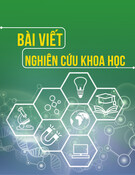
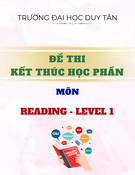
![Đề cương môn Tiếng Anh 1 [Chuẩn Nhất/Mới Nhất]](https://cdn.tailieu.vn/images/document/thumbnail/2025/20251130/cubabep141@gmail.com/135x160/51711764555685.jpg)


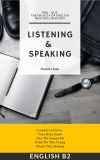
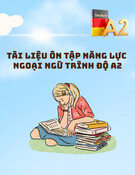




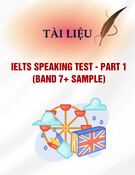

![Mẫu thư Tiếng Anh: Tài liệu [Mô tả chi tiết hơn về loại tài liệu hoặc mục đích sử dụng]](https://cdn.tailieu.vn/images/document/thumbnail/2025/20250814/vinhsannguyenphuc@gmail.com/135x160/71321755225259.jpg)
